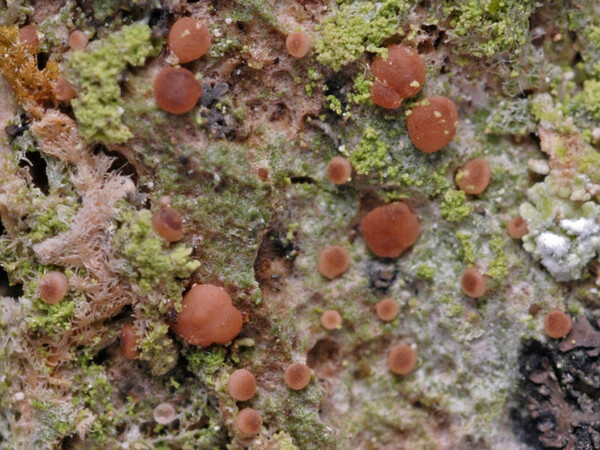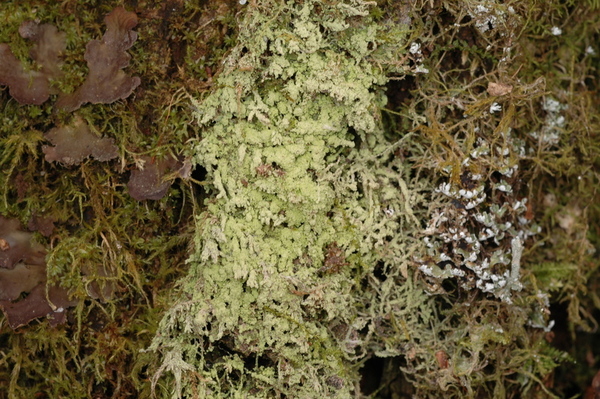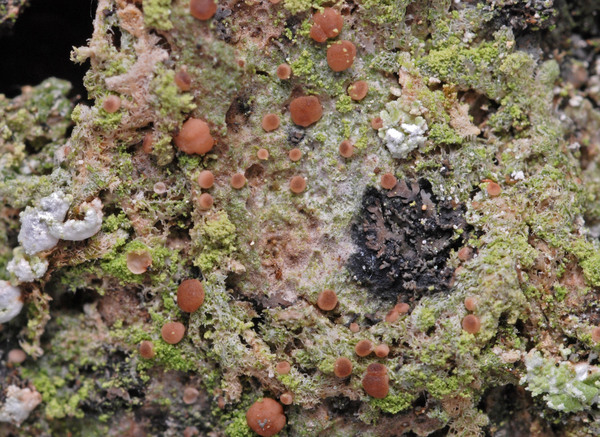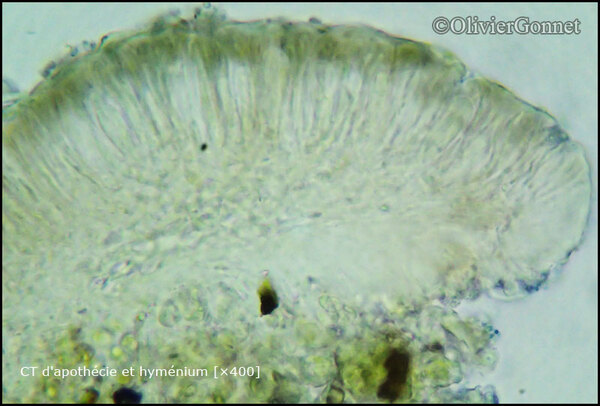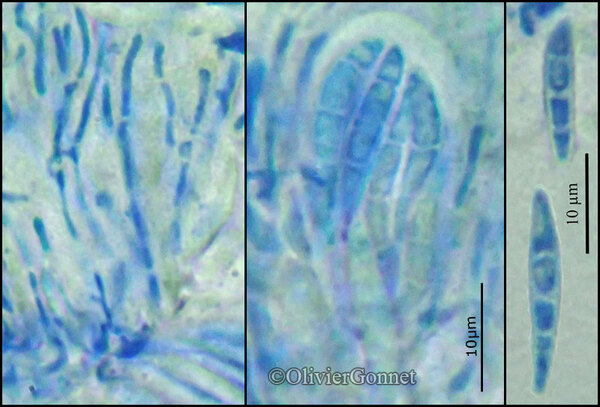Mycobilimbia epixanthoides (Nyl.) Hafellner & Türk
Vitik., Ahti, Kuusinen, Lommi & T. Ulvinen ex Hafellner & Türk, Stapfia 76: 153, 2001. Basionym: Lecidea epixanthoides Nyl. - Flora, 48: 5, 1865.
Synonyms: Bacidia epixanthoides (Nyl.) Lettau; Biatora epixanthoides (Nyl.) Diederich
Distribution: N - Frl, TAA (Nascimbene & al. 2008c, 2014, 2022, Nascimbene 2014, Nimis & al. 2015), Lomb (Nascimbene & al. 2021).
Description: Thallus crustose, endo- to episubstratic, continuous to granular-verrucose, forming more or less continuous, sorediate patches, sometimes with a subleprose appearance, without a distinct prothallus. Areoles greyish green, irregular, convex, 0.1-0.2 mm in diam.; continuous thallus parts tuberculate; soralia yellowish green to pale yellow, bursting from areoles or tubercles, irregular in outline, to 0.1-0.2 mm in diam., soon becoming confluent into a more continuous, subleprose crust; soredia farinose, 15-20(-30) μm in diam., often gathered into larger, irregular consoredia. Medulla not developed. Apothecia rare, biatorine, 0.4-1 mm across, constricted at base, pale flesh-coloured to blackish brown, with a finally strongly convex, often tuberculate disc, and a thin, paler, soon excluded proper margin. Proper exciple colourless in outer part, pinkish brown within, 60-80 μm wide; hymenium colourless or with small brown spots, 50-80(-100) μm high; hypothecium colourless, 120-240(-300) μm high. Asci 8-spored, clavate, with a K/I+ blue apical dome penetrated by a narrow, K/I– apical cushion surrounded by a narrow, deeply K/I+ blue zone, the wall K/I- but surrounded by a I+ red-brown, K/I+ blue outer layer, the ocular chamber relatively small, Biatora-type. Ascospores (1-)3-septate, hyaline, ellipsoid, 13-22(-25) x 4-7 μm. Photobiont chlorococcoid. Spot tests: thallus K-, C-, KC-, P-, UV-. Chemistry: without lichen substances.Note: on mossy trunks of deciduous trees, more rarely on siliceous rocks.
Growth form: Crustose
Substrata: bark
Photobiont: green algae other than Trentepohlia
Reproductive strategy: mainly asexual, by soredia, or soredia-like structures (e.g. blastidia)
Commonnes-rarity: (info)
Alpine belt: absent
Subalpine belt: absent
Oromediterranean belt: absent
Montane belt: very rare
Submediterranean belt: extremely rare
Padanian area: absent
Humid submediterranean belt: absent
Humid mediterranean belt: absent
Dry mediterranean belt: absent
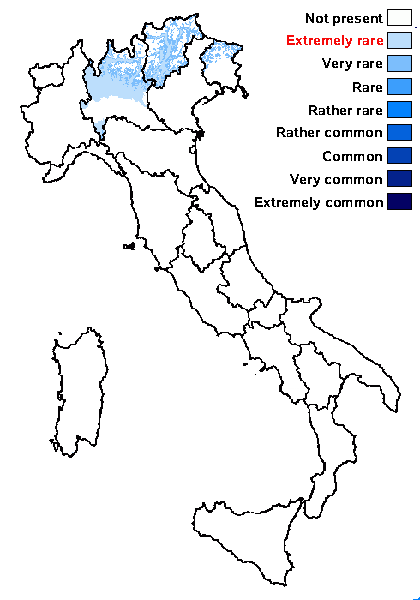
Predictive model
Herbarium samples
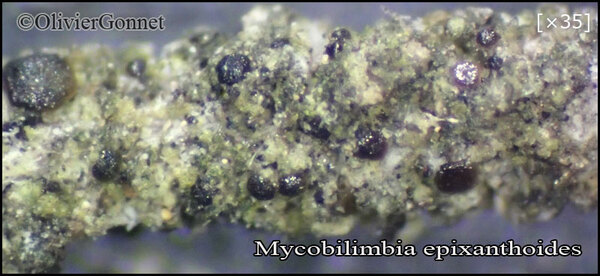
Courtesy Danièle et Olivier Gonnet - Source: https://www.afl-lichenologie.fr/Photos_AFL/Photos_AFL_M/Mycobilimbia_epixanthoides.htm
France, Bocca di Gradello, alt. 550 m - Corse- (20) - sentier Punta di Gradello, lignicole, sur branchette d'Erica arborea
23/3/2014

Courtesy Danièle et Olivier Gonnet - Source: https://www.afl-lichenologie.fr/Photos_AFL/Photos_AFL_M/Mycobilimbia_epixanthoides.htm
France, Bocca di Gradello, alt. 550 m - Corse- (20) - sentier Punta di Gradello, lignicole, sur branchette d'Erica arborea
23/3/2014
Growth form: Crustose
Substrata: bark
Photobiont: green algae other than Trentepohlia
Reproductive strategy: mainly asexual, by soredia, or soredia-like structures (e.g. blastidia)
Commonnes-rarity: (info)
Alpine belt: absent
Subalpine belt: absent
Oromediterranean belt: absent
Montane belt: very rare
Submediterranean belt: extremely rare
Padanian area: absent
Humid submediterranean belt: absent
Humid mediterranean belt: absent
Dry mediterranean belt: absent

Predictive model
| Herbarium samples |

Courtesy Danièle et Olivier Gonnet - Source: https://www.afl-lichenologie.fr/Photos_AFL/Photos_AFL_M/Mycobilimbia_epixanthoides.htm
France, Bocca di Gradello, alt. 550 m - Corse- (20) - sentier Punta di Gradello, lignicole, sur branchette d'Erica arborea
23/3/2014

 DOLICHENS
DOLICHENS
